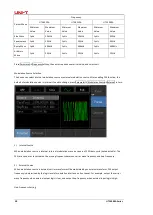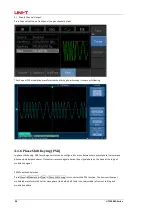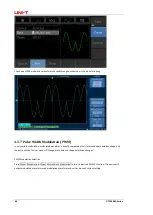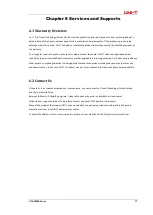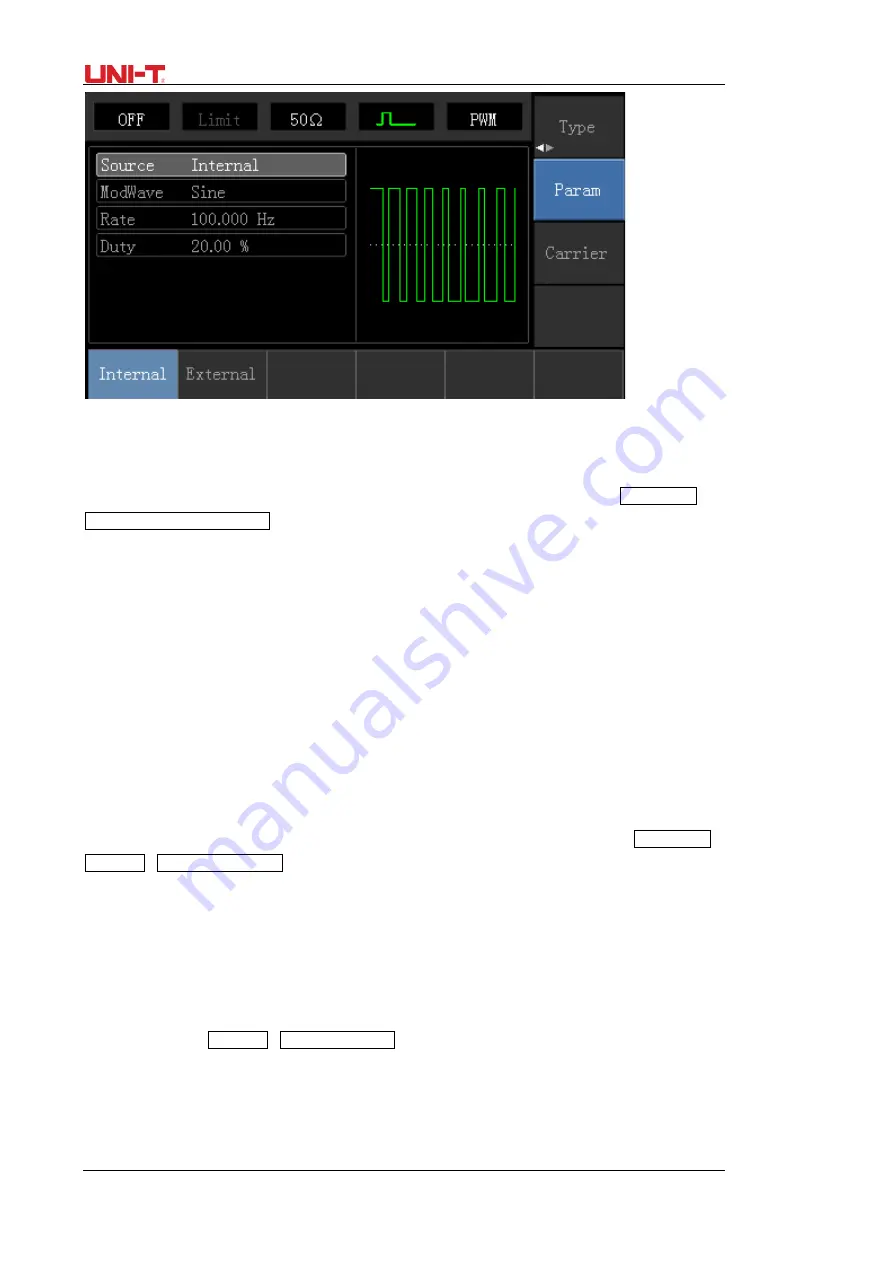
62 UTG1000A Series
1)
Internal Source
When modulation source is internal, modulation wave can be: sine wave, square wave, rising ramp wave, falling
ramp wave, arbitrary wave and noise, and the default wave is sine wave. If need to change, press Carrier Wave
ParameterModulation Waveform in turn.
Square wave: duty cycle 50%
Lead Ramp Wave: symmetry degree is 100%
Tail Ramp Wave: symmetry degree is 0%
Arbitrary Wave: Arbitrary wave length limit is 1kpts
Noise: White Gauss noise
2)
External Source
When modulation source is external, carrier wave waveform will be modulated by an external waveform.
Modulation Shape Frequency Setting
When modulation source is internal, frequency of modulation wave can be modulated (range is 2mHz~20kHz). After
enabling PWM function, the default of modulation wave frequency is 1kHz. If need to change, press Carrier Wave
Parameter
→
Modulation Frequency in turn. When modulation source is external, carrier wave waveform (pulse
wave) will be modulated by an external waveform. The range of modulation signal input from external is 0Hz to
20kHz.
Duty Cycle Deviation Setting
The duty cycle deviation represents the difference between the duty cycle of the modulated waveform and the
current carrier’s duty cycle. Settable range of PWM duty cycle is from 0% to 49.99%, and the default value is 20%. If
need to change, press Parameter
→
Duty Cycle Deviation in turn.
The duty cycle deviation represents the difference between the duty cycle of the modulated waveform and
the duty cycle of the original pulse waveform, represented in %.
Duty cycle deviation cannot be beyond the duty cycle of current pulse wave.
Sum of duty cycle deviation and the current pulse wave duty cycle must no more than 99.99%.
Summary of Contents for UTG1000 Series
Page 2: ......
Page 90: ...88 UTG1000A Series This user manual may be revised without prior notice...
Page 91: ...UTG1000A Series 89...



